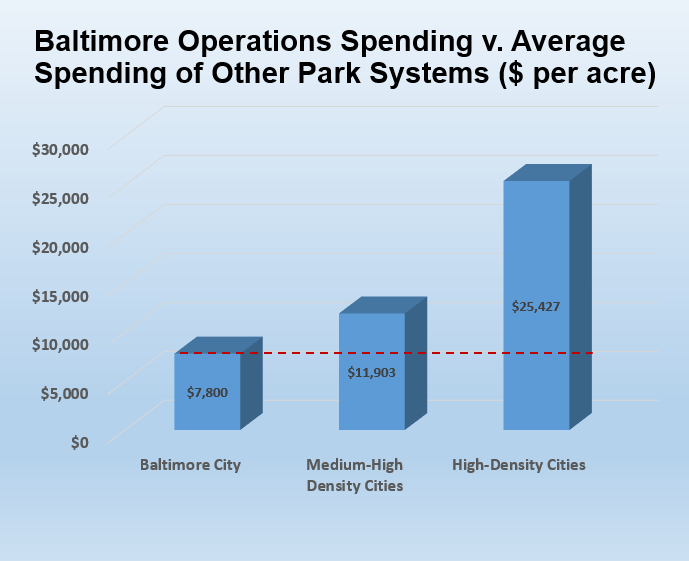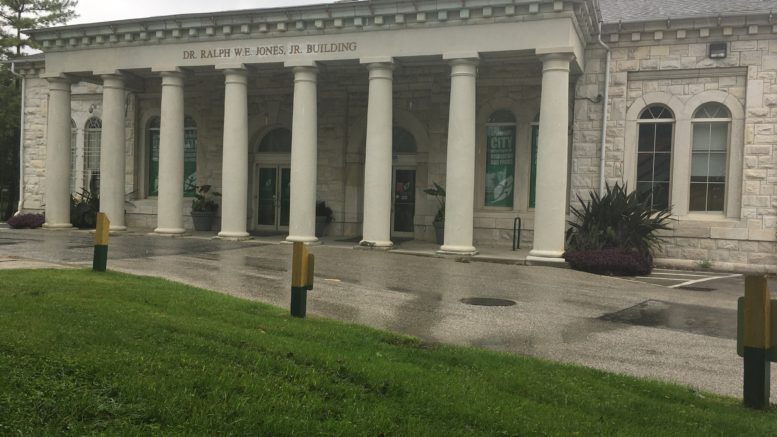Over the years, I’ve heard consistently that Baltimore Recreation and Parks Department is underfunded. This statement is often used to explain why certain recommendations made in Patterson Park’s Master Plan are not implemented. Although such an excuse is often repeated, I had no actual data to suggest that it was true, so I did some digging. It turns out that this statement is not only correct, but Baltimore’s Recreation and Parks Department is underfunded to such a degree that it is hard to imagine how the millions of dollars of recommended changes in Patterson Park’s Master Plan can ever be accomplished.
A good way to determine whether a park system is properly funded is to look at other park system spending for comparison. A great resource for such comparison is The Trust for Public Land’s City Park Facts Report. Taking a look at that report, it becomes clear – Baltimore City spending on its park system is well below comparable cities.
The Trust for Public Land’s (“TPL”) City Park Facts Report for 2017 takes operations spending data from 100 different city park systems, analyzes it for comparison and makes this data public for all to review. One of the metrics TPL uses to compare different city park systems is population density. Baltimore was classified as a high-density city along with seventeen others. As shown in the below chart, Baltimore’s Recreation and Parks Department’s operations budget is well below the norm of other high-density cities. In fact, Baltimore’s operations spending per acre was a whopping $17,627 lower than the average spending per acre of other high-density cities. This is an incredibly large disparity.

Even if Baltimore was characterized as a medium-high density city, the above chart shows that Baltimore’s operations spending still lagged appreciably behind spending in those cities. While the difference in spending between Baltimore and medium-high density cities is not as pronounced as in the high-density category, it is still significant.
TPL’s spending data is an eye opener. Underfunding of operations likely has a large effect on park maintenance (or lack thereof), rules enforcement and the ability to provide recreational programming – some of the precise recommendations made in Patterson Park’s Master Plan. In fact, TPL’s data shows that Baltimore has a long way to go if it wants to have a park system that operates at the same level of comparable cities.

Be the first to comment on "No. 2 – Baltimore’s Recreation and Parks Department is (way) underfunded"